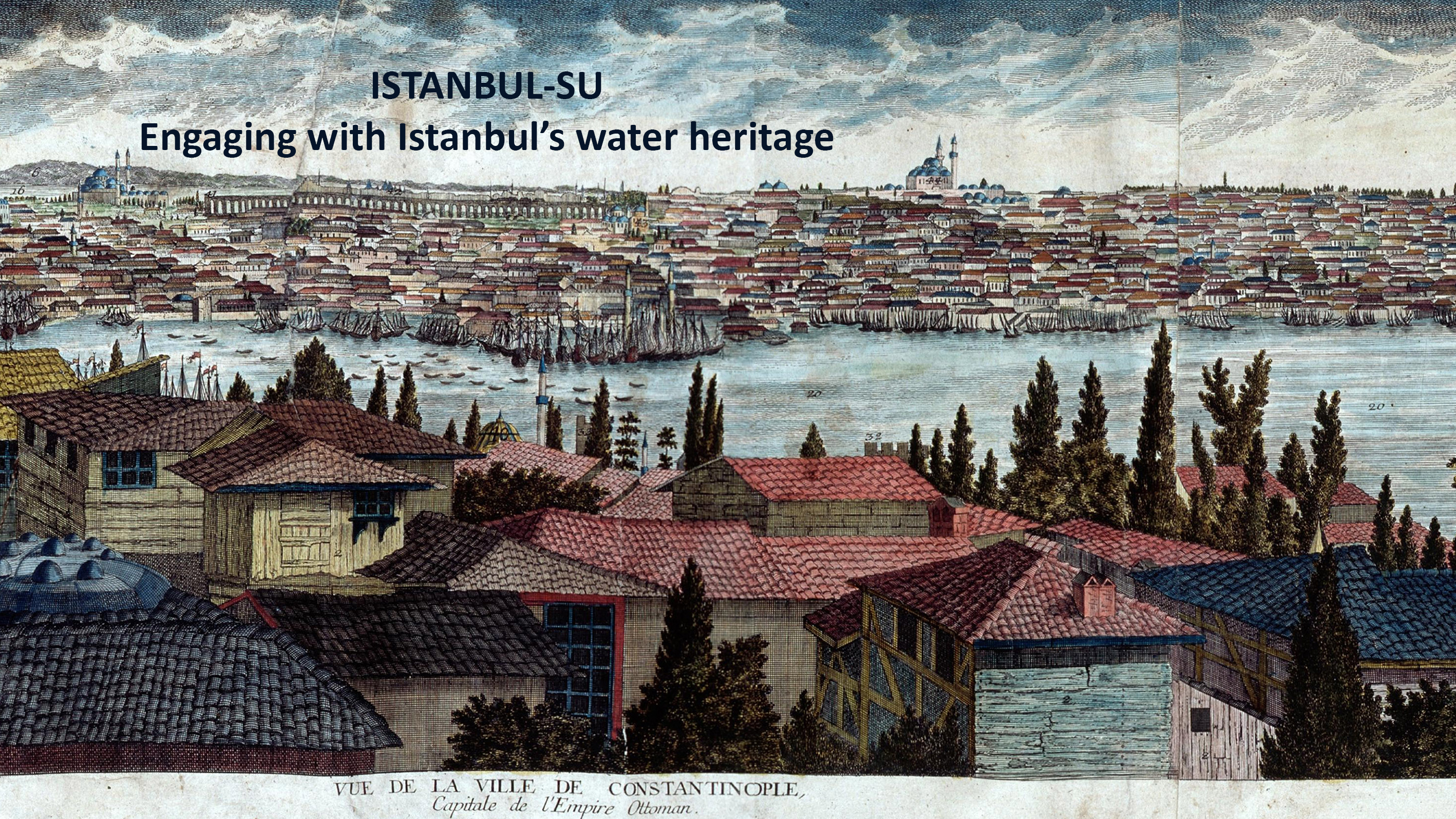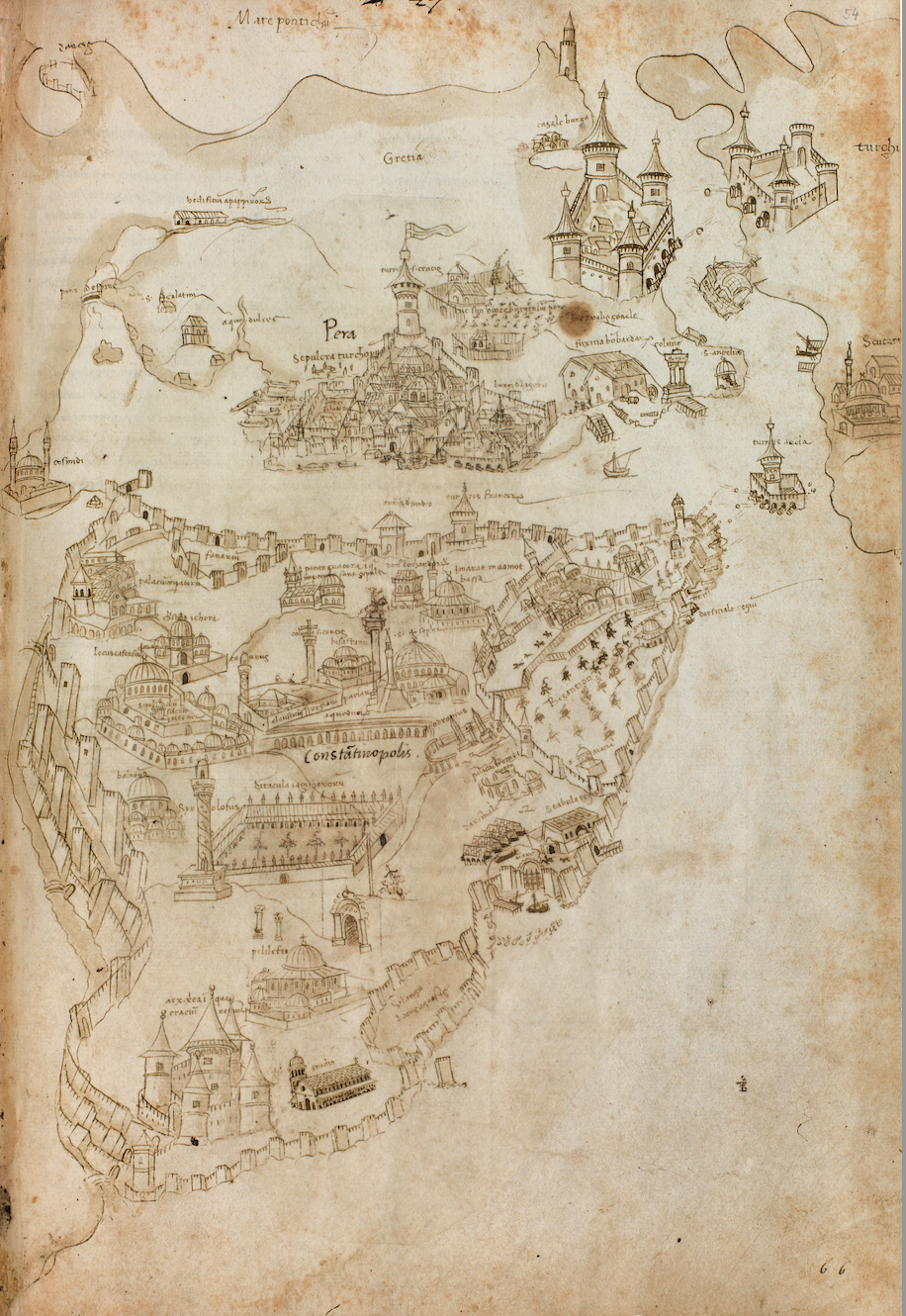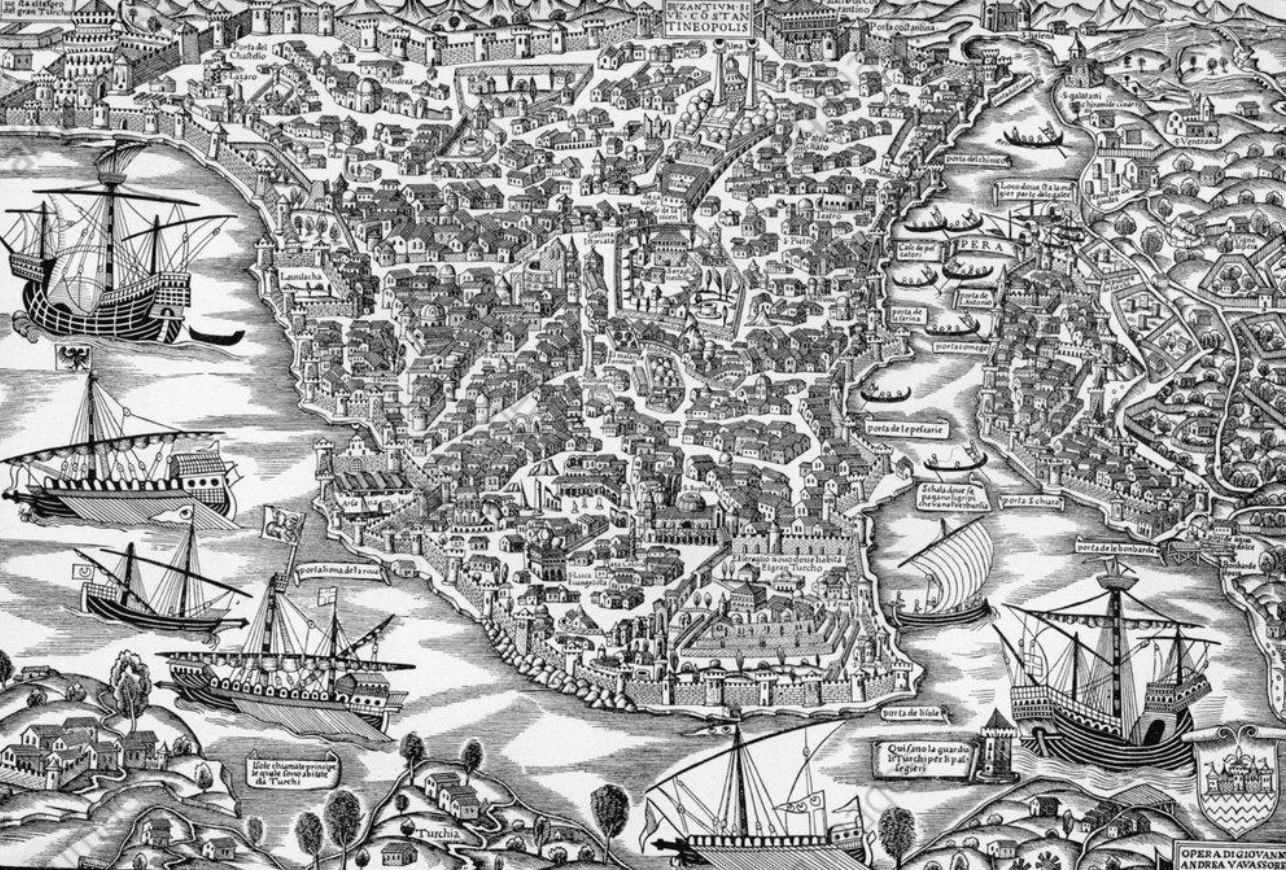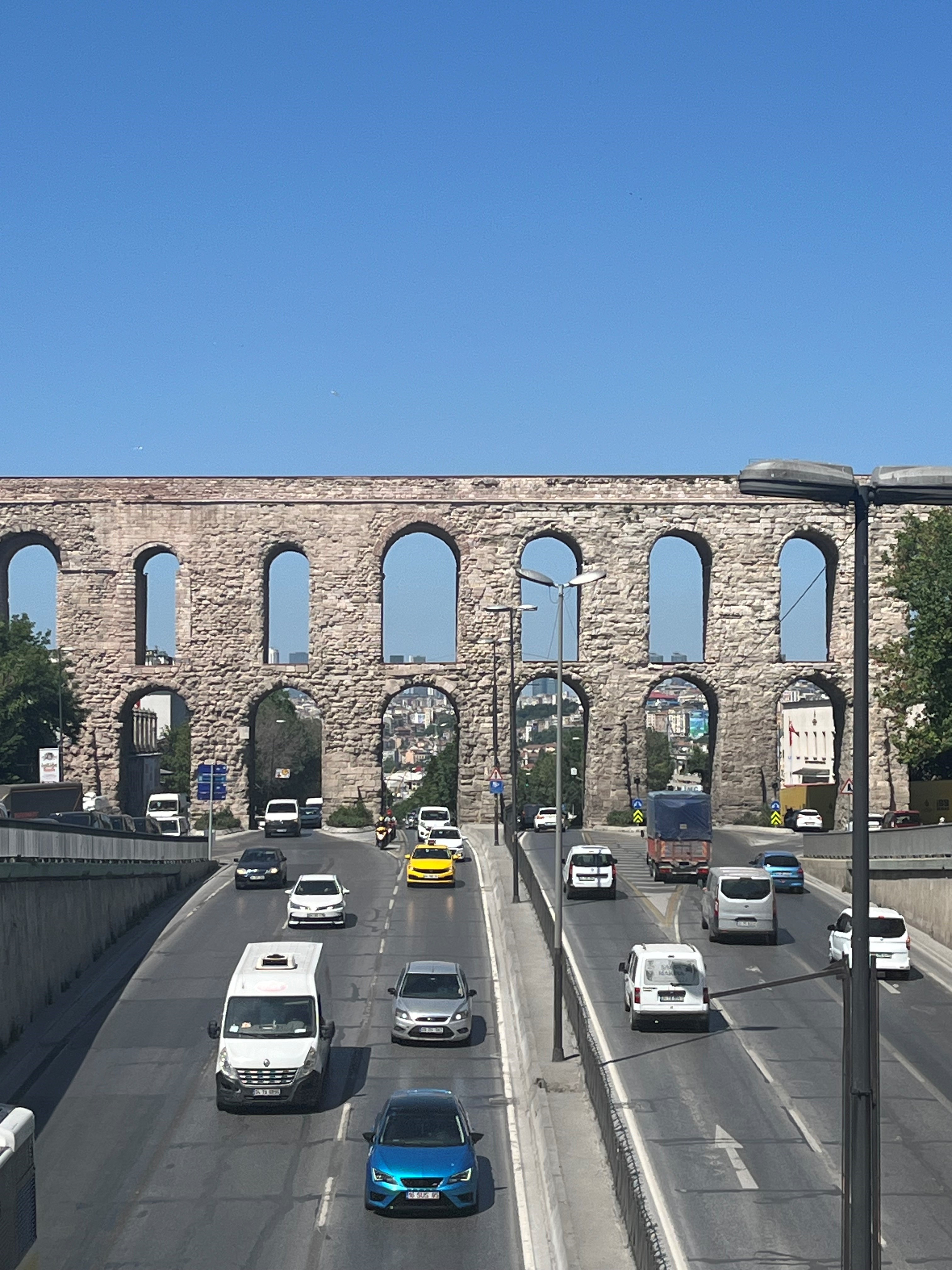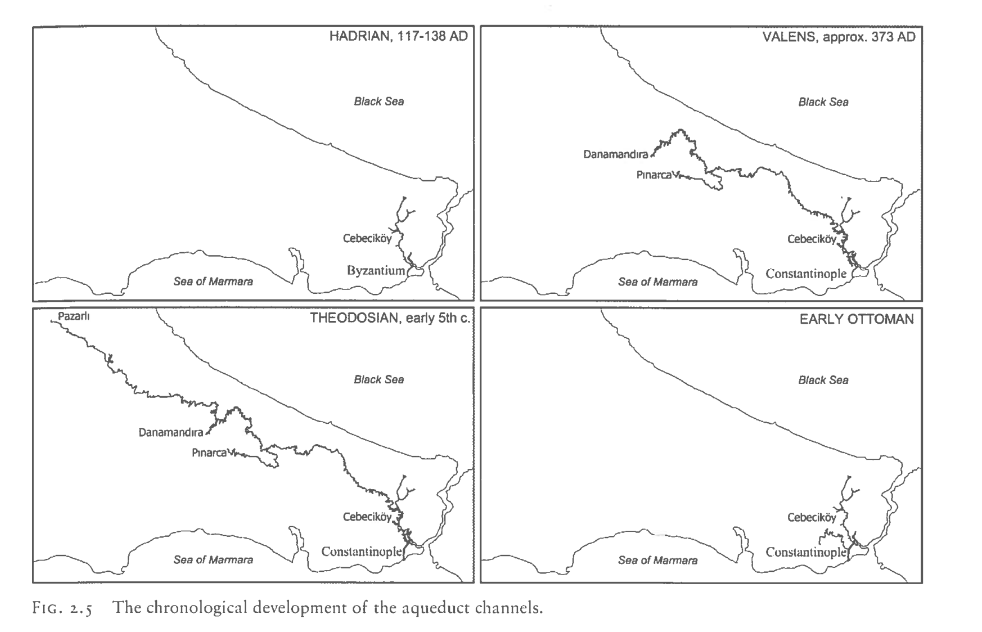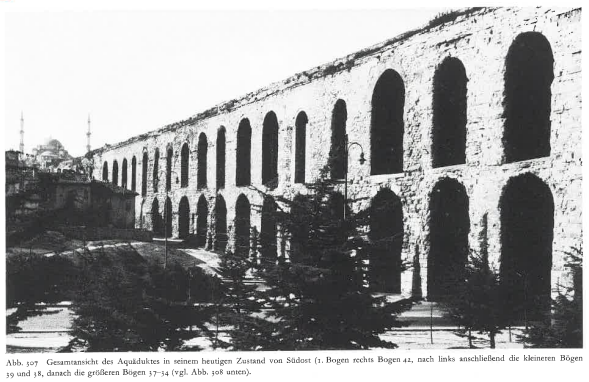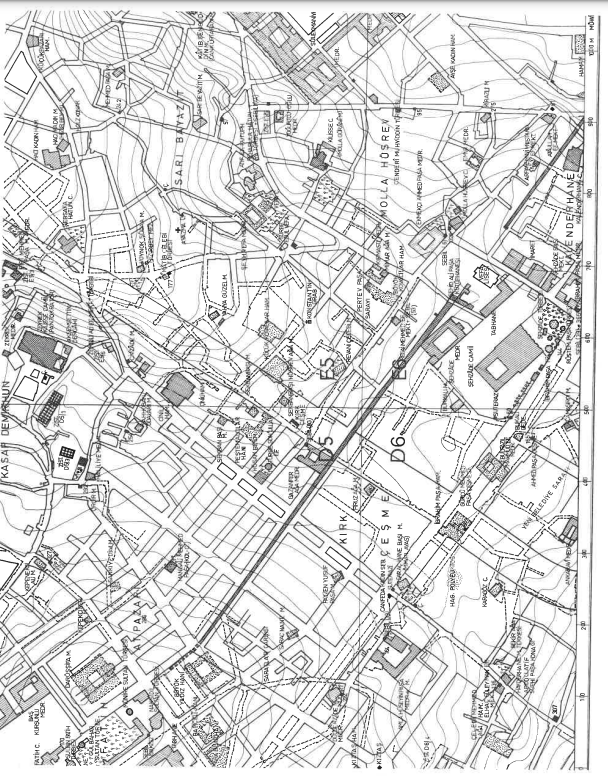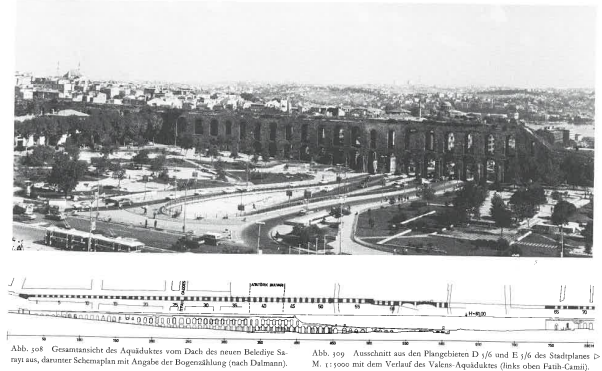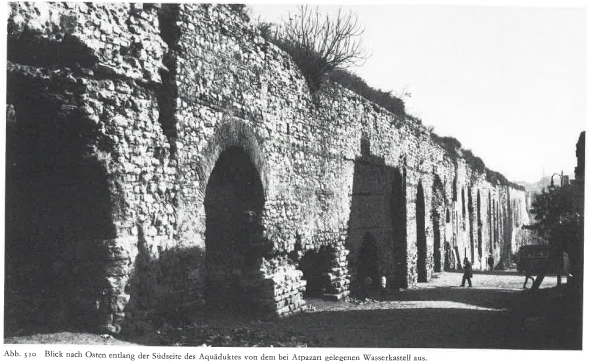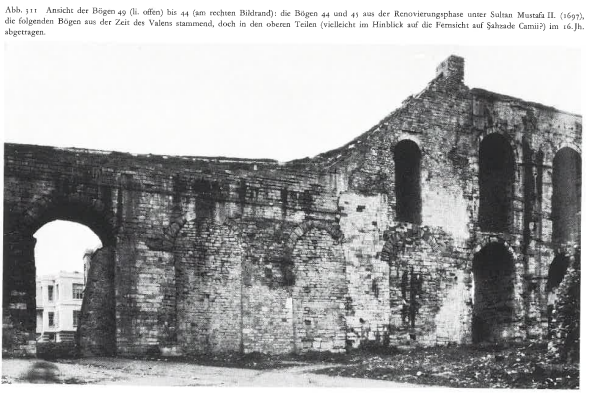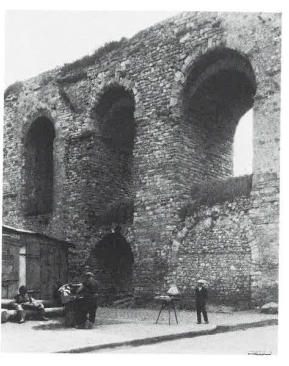971 m long aqueduct bridge with 86 arches. This bridge was built as part of the Valens Waterway (‘aqueduct system’), a second line that supplemented the already existing Hadrian Waterway due to the increasing need to sustain Constantinople’s growing population. The Valens-line, in contrast to its predecessor, provided water for the more elevated parts of the city. The Valens aqueduct bridge carried water across the valley between Fourth and Third Hill at an altitude of 56-57 m above sea level. Aqueduct bridges like this one were necessary to carry the water over lower valleys, because the waterway systems were gravity-led. Within the city walls, the Valens Waterway most likely supplied installations up to an elevation of 59,5 m.
Today, the Valens aqueduct bridge is known as the Bozdoğan Kemeri (Turkish: ‘Aqueduct of the Grey Falcon’). Its top bridge has been capped with modern cement as the Aqueduct bridge was relieved of its actual function in the 20th century.
"A fragmentary chrismon on a key-stone of Arch 30 also indicates construction (or at least very radical repairs) in the late fourth or fifth century." (Crow et al., 2008, p. 118)
